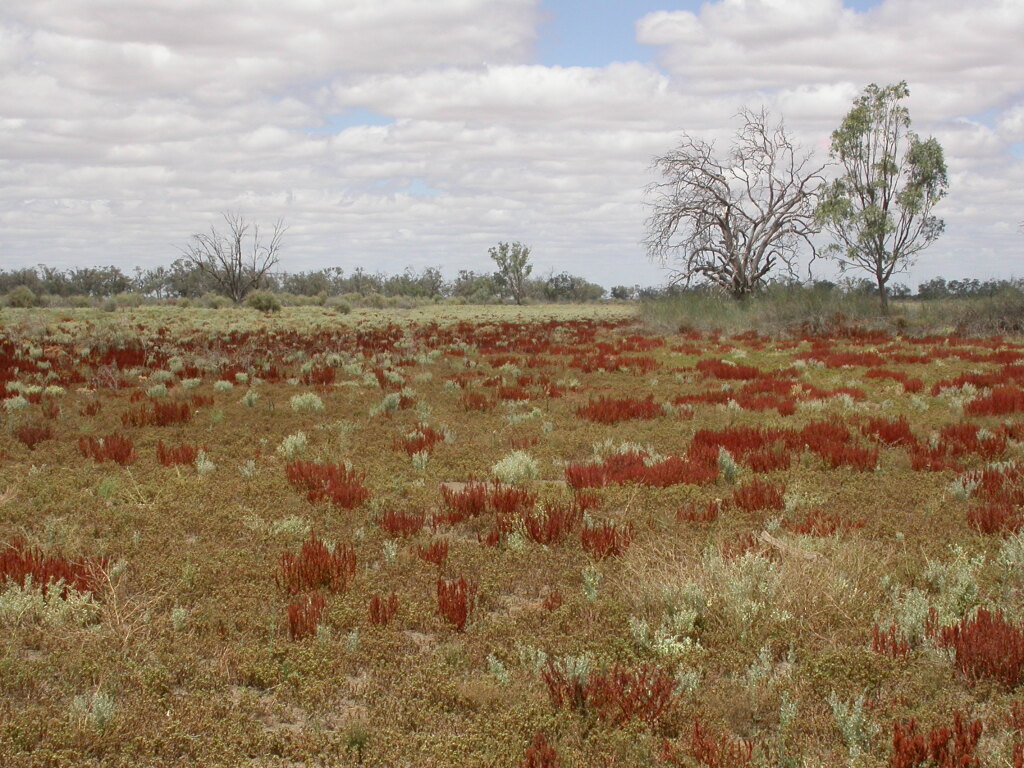Rumex crystallinus
Lange Glistening DockAnnual to c. 40 cm high, often drying red-brown, with several to many, usually simple branches from base. Basal leaves with petioles shorter to longer than lamina; lamina oblong, 2–8 cm long, 2–12 mm wide, bases truncate, usually slightly dilated; margins strongly crisped, sometimes recurved; upper leaves reduced but petiolate. Inflorescence often occupying most of plant; flower 'whorls' many-flowered separated by less than 1 cm, contiguous above, each subtended by a leaf. Fruiting valves narrowly triangular or trullate, 1.5–2 mm long, 0.5–1 mm wide (excluding teeth), 1–2-toothed near base (rarely the teeth absent); callosities present on each valve, c. one-third as long as valve; fruiting pedicel subequal to or slightly longer than valves, jointed near base. Nut c. 1 mm long. Flowers Oct.–Mar. (dependent on seasonal rains or river–levels).
LoM, MuM, Wim, VVP, VRiv, MSB, RobP, MuF, Gold. Inland parts of all mainland states. Rare in Victoria, occurring only in the far north-west of the state on the Murray River floodplain, recorded only from the margins and drying beds of Lakes Wallawalla, Hattah and Lalbert.
Willis (1973) included R. tenax in his concept of R. crystallinus, but as outlined by Rechinger (1984) the two taxa are quite distinct, and possibly not even closely related.
Walsh, N.G. (1996). Polygonaceae. In: Walsh, N.G.; Entwisle, T.J., Flora of Victoria Vol. 3, Dicotyledons Winteraceae to Myrtaceae, pp. 272–295. Inkata Press, Melbourne.
 Spinning
Spinning


